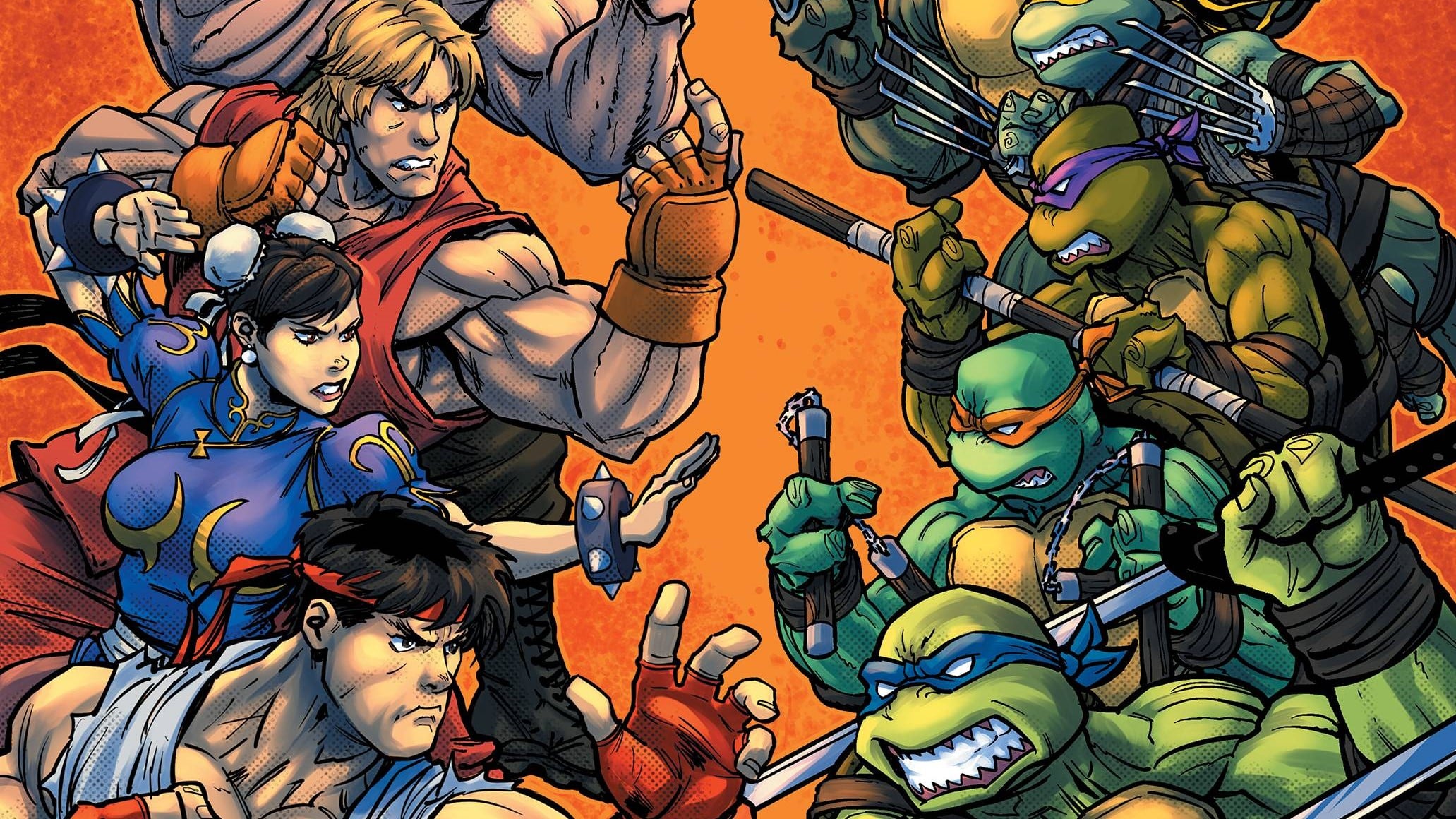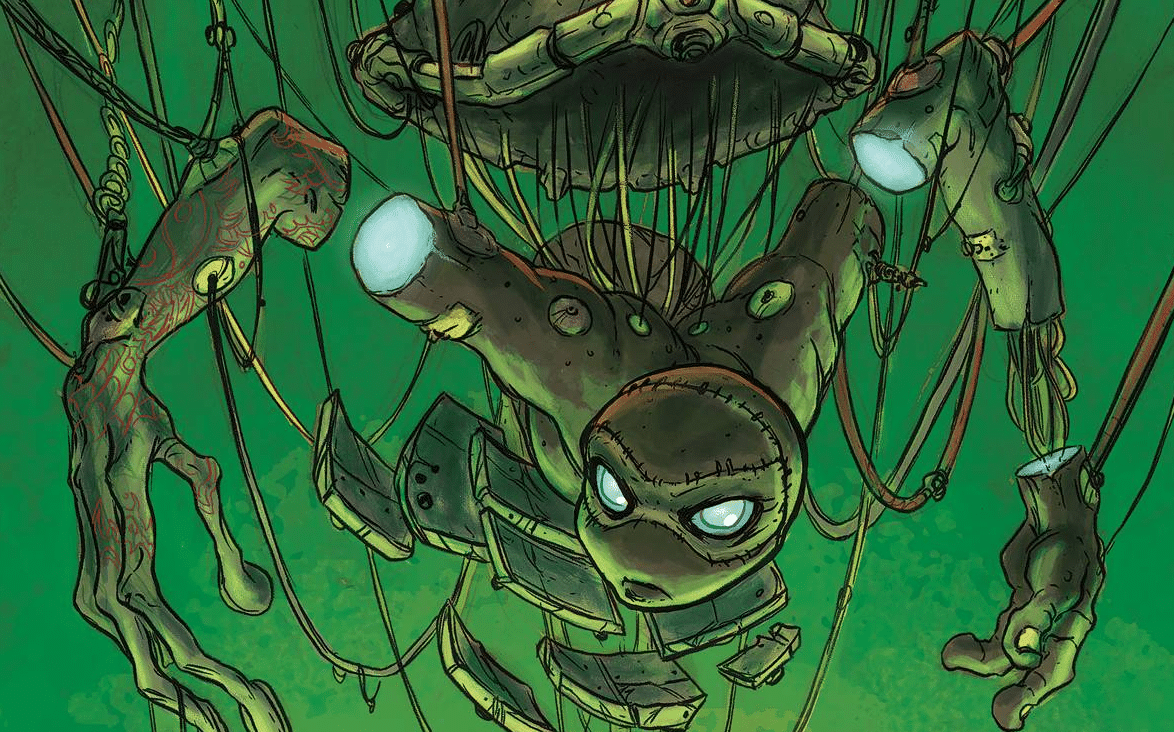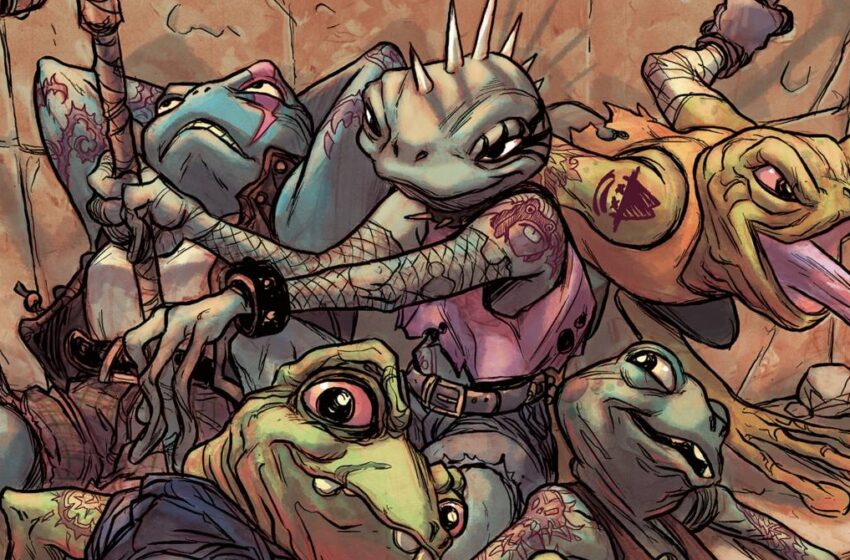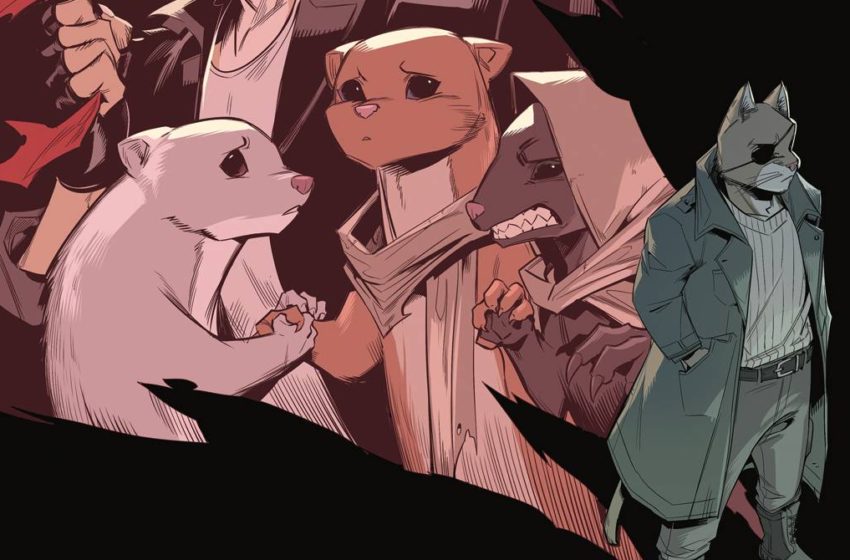Hob’s Mutanimal Enforcers are on the run. After an attempted assassination at a rally leads to rioting, the Splinter Clan and their allies storm Hob’s stronghold – and we find out for the first time just how in over his head Hob really is. Teenage Mutant Ninja Turtles #120 is written by Sophie Campbell, drawn by Jodi Nishijima, colored by Ronda Pattison, and lettered by Shawn Lee, with story consulting from Kevin Eastman & Tom Waltz.
Things get – well, no, things were already chaotic.
The chaos continues in Teenage Mutant Ninja Turtles #120, as the rally-turned-riot moves on to its next phase: invasion. The mutants of Mutant Town may have been ready and willing to hold elections to depose Hob, but after their would-be Mayor was nearly assassinated, they’re not willing to wait any longer.
I don’t envy a new artist coming in, especially this issue. There’s a lot of chaos to handle – large fight scenes containing dozens of mutants, each one decidedly distinctive from the other. The art in this issue is still a noticeable step down, however, and what makes it worse is that the art last issue was already a step down from the excellent work of Sophie Campbell. The fight scenes at the beginning is where the art is most noticeably lacking lustre – it’s not stylistic choices being made, you can see the standard that the art is going for and how it fails to meet them in a number of panels. Largely blank backgrounds don’t help either.
The biggest worry from the last issue is how the Turtles’ students would hold up in battle, and they seem to be holding their own against the Mutanimal Enforcers pretty well! It’s a testament to how much the Splinter Clan has strengthened its community, which is a big part of this era’s theme.
Speaking of community, Hob’s is falling apart. He’s always been a fascinating villain to me – his heart and ideals have always been in the right place, but his means have always been inescapably wrong, and that makes him dangerous. He’s willing to hurt and manipulate people to get what he wants, but the fact that his ideals line up with the turtles’ as much as they do makes it hard to hate him. There are lines he won’t cross. Unfortunately, the lines he will cross are the ones that prove to be his downfall.
The problem is, while he’s managed to surround himself with allies who adopt his methods, they don’t all share his level of idealism. They’re willing to use those methods for more selfish reasons – or at least more self-centered ones. It turns out that Ray is pulling a Beast, and has been manipulating things from behind the scenes believing that he knows best. Hob is horrified – and is a large part of why this resistance ends without too much bloodshed (with a little help from the Turtles’ secret fairy God-Shredder, of course).
It’s here that the best parts of the art do get to shine, putting a spotlight on Hob’s inner conflict. He’s trying to hold on to his vision, his dreams, even as everything seems to be falling away from him. We see him realize just how much control he’s lost over the eventual outcome. He’s battling his need for control over the realization that the Turtles are Mutant Town’s best bet – despite the Turtles unwillingness to cross lines Hob believes need crossing.
In the end, Hob’s willing to stand down to empower Mutant Town (hey, that would’ve made a great slogan, actually). He would have accepted – even encouraged – free and fair elections, and as Raphael comes crashing in, he’s willing to surrender.
The thing is, Raphael was never seeking justice – what he wanted was catharsis, and the two look very similar until moments like this happen. “But go on, hit me if you think it’ll make you feel better,” Hob tells Raph. And Raph does exactly that.
Not enough action comics capture the tragedy inherent in violence. The way it can show off how fighters have been stripped away of all reasonable courses of action, the shadow of what Could Have Been in a better world hanging over every punch. Raphael is an action hero – more often than not, he’s made his world a better place by punching everything that’s wrong with it. It’s clear he wants to do that, here – and it’s clear that it’s not working.
Violence, unfortunately, always passes down to the next generation, and the kidnapped ninja weasels, eyes welling up with tears, savagely attack Hob to defend Raphael – all this just in time for the rest of the invading mob to show up, as Raphael talks about payback. These are all people who have been turned against their will into mutants, forever cut off from the life they knew. Are they like Raphael, seeking personal catharsis over justice? Or is the community that the Splinter Clan has been trying to build able to figure out a better way forward?
We won’t know until the next issue – but I’m excited to find out.
Armaan is obsessed with the way stories are told. From video games to theater, TTRPGs to comics, he has written for, and about, them all. He will not stop, actually; believe us, we've tried.






